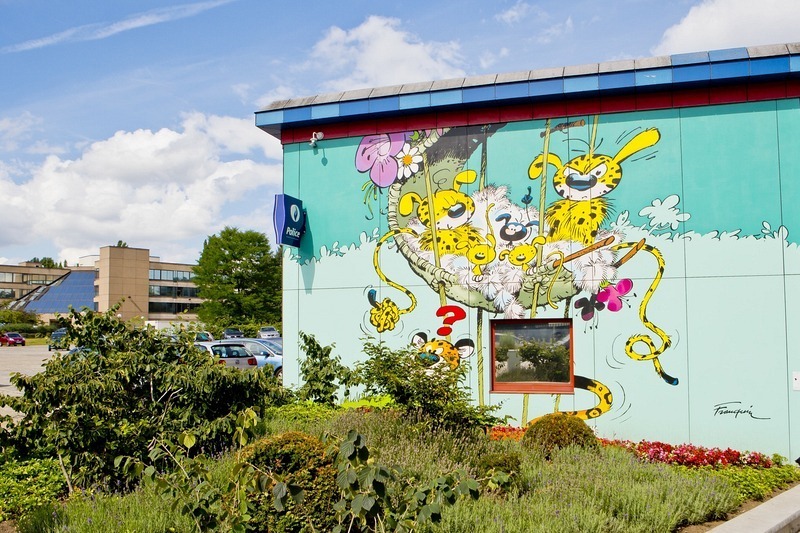The Comic Book Route in Brussels is a path that takes you along several walls and buildings throughout the inner city of Brussels as well as the neighborhoods of Laeken and Auderghem, where large murals of some of the most popular characters of Franco-Belgian comics are painted – Tintin, Smurf, Asterix, Lucky Luke, Gaston, Gil Jourdan and more. The project, which began in 1991, was initiated by the local authorities in collaboration with the Belgian Comic Strip Center to celebrate Belgium’s long history and association with comic strips.
Comic strips are the pride of Belgium. It is the one country where comic strips have grown from a popular medium into an art in its own right. Indeed, with more than 700 comic strip authors, Belgium has more comic strip artists per square kilometer than any other country in the world. In the Belgian capital, you can find dozens of specialized shops, statues, wall paintings, bars and museums dedicated to the art. Nowhere else in this world are comics so strongly rooted in reality and in people's imagination.
In the early decades of the 20th century, comics were not stand-alone publications, but were published in newspapers and weekly or monthly magazines as episodes or gags. In the early 1900s, the first popular French comics appeared, including Bécassine and Les Pieds Nickelés. The first large-scale production of comics in Belgium started in the second half of the 1920s. During this period, Belgium saw the creation of many youth magazines like Zonneland and Petits Belges.
One of the earliest proper Belgian comics was The Adventures of Tintin, by Georges Prosper Remi, better known as Hergé, which was published in 1929. In 1934, Hungarian Paul Winckler made a deal with King Features Syndicate and began publishing the adventures of Mickey Mouse and other Disney figures on his youth magazine Le Journal de Mickey. The success of this initiative inspired other publishers to publish periodicals with American series. This continued during the remainder of the decade, with hundreds of magazines publishing mostly imported material. Spirou, a leading comic journal, was launched during this period.
When World War II started, it became impossible to import American comics. This created an opportunity for many young artists to start working in the comics and animation business. At first, they continued unfinished American stories of Superman and Flash Gordon, but later started creating their own heroes and stories. Over the next 50 years, supported by dozens of publishers, the market for domestic comics began to mature.
Today, Franco-Belgian comics have been translated in most European languages, while some series such as Lucky Luke, The Smurfs, Asterix and Tintin, enjoyed a worldwide success.
The Comic Book Route celebrates these characters and more through more than 50 mural paintings. The Comic Book Route is well worth seeing even if you are not a fan of comics, and following the trail is actually a good way to discover the capital.

Sources: Wikipedia / Just Landed / Franco-Belgian comics (Wikipedia) / Comics Art Museum
Photos: Visit Brussels




























Comments
Post a Comment